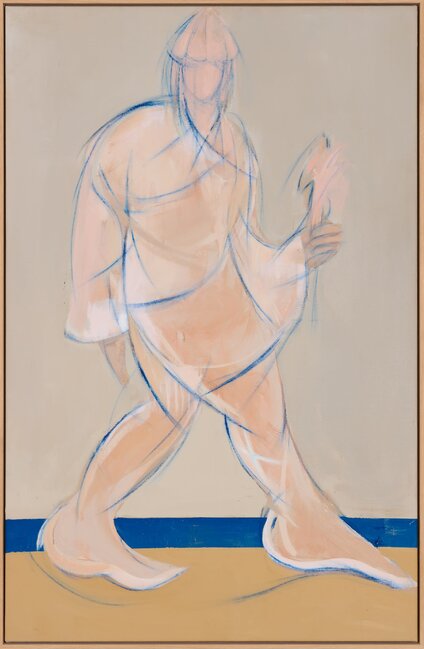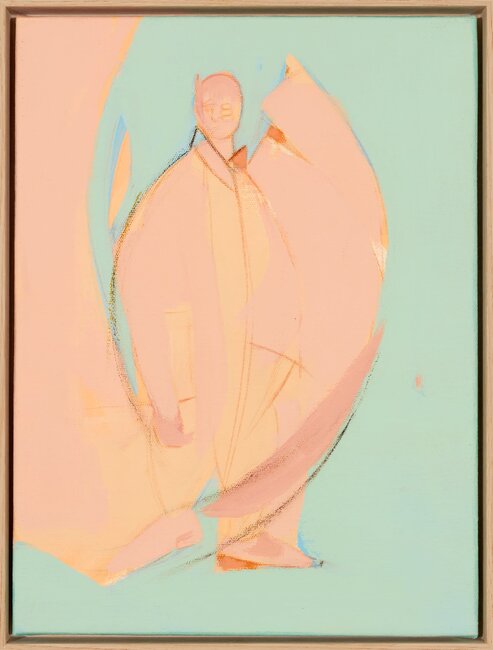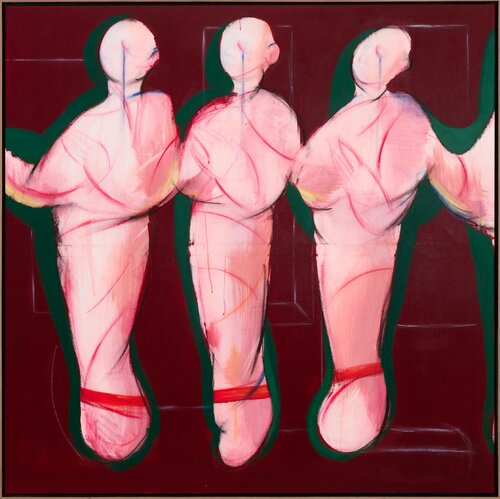
Irinka Talakhadze
Georgia (2000)In search of insight into the world and ourselves
With a father-artist, Irinka Talakhadze (°2000, lives and works in Tbilissi, Georgia) was brought up on art. Consequently, she does not remember when exactly she first came into contact with art. 'For as long as I can remember, I dreamed of a life as an artist. The death of my father added strength to that desire. When I am painting, I feel his closeness most strongly. That makes art extra special for me, it has a meaning far beyond the concrete work,' Talakhadze says.
It was also her father who organically taught her the tricks of the trade. 'I don't want to limit myself to one specific material, but use both oil and acrylic paint and oil crayons on canvas. The main thing is that I can convincingly convey the energy I feel myself on the work, so that viewers can experience and share my feelings through the canvas,' Talakhadze states.'
In this sense, literally anything can be a source of inspiration. From something small that happens in everyday life over elements from old works to spontaneous sketches and experiments. I don't plan my artworks, everything arises very spontaneously and naturally. I suspect my paintings owe their vibrancy and creative eloquence to that. I also find it particularly fascinating to hear the different opinions, interpretations and emotions about a work. That's why I try not to give them titles, and prefer not to explain them myself.'
Exactly those qualities are also reflected in the artists she admires. 'With Francis Bacon, I cherish the spontaneity, dynamism and representation of his inner world, while Pablo Picasso's quest inspires. He could paint just about anything in any style, but managed to find his own style, and make history with it,' Talakhadze argues.
Between utopia and dystopia
In recent months, Irinka Talakhadze's characters transformed from somewhat stoic, solidly designed women in massive uniforms to more transparent, airy figures. 'Although I mainly draw inspiration from my own world, my colourful work also partly inscribes itself in Soviet aesthetics. What fascinates me is phenomenology, or the relationship between something and its essence. Between what we really see in reality and what an image leads us to believe. Or how utopia and dystopia, or happiness and tristesse, can be contained in the same image. By better understanding the world around us, we also gain more insight into ourselves,' Talakhadze says. 'In my self-taught search for my own voice, I made daily sketches. When similar figures kept reappearing, I started experimenting further with them. This gradually led to the transformation into more translucent figures.'
Those figures form the basis of the series Cold Tears, which is being shown for the first time at Private Walls Gallery. 'I love the bold background, the dynamics and the colours, which make the transparent figures stand out perfectly. I personally associate the transparency with a kind of honesty. I also admire these qualities in Egon Schiele's oeuvre. In particularly difficult times, he managed to express his inner world through his emotionally charged artworks, making his voice heard.'




